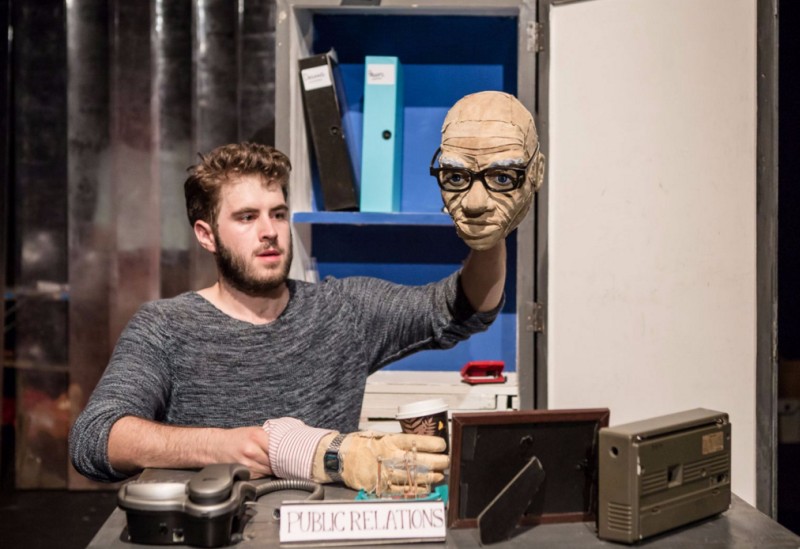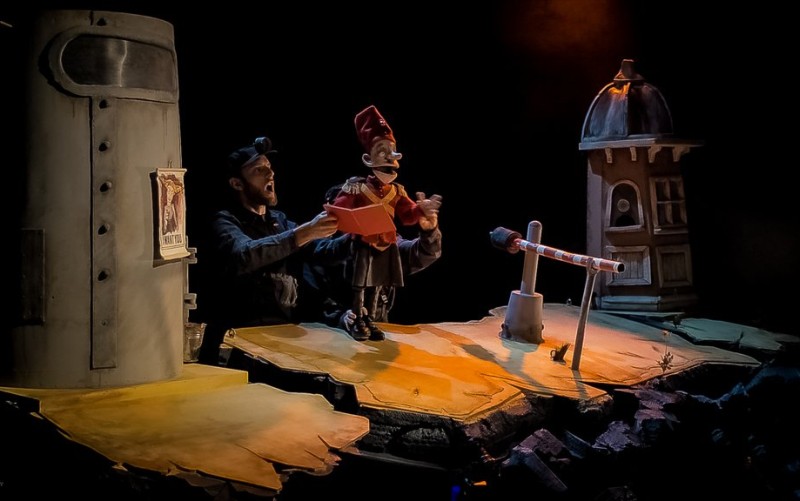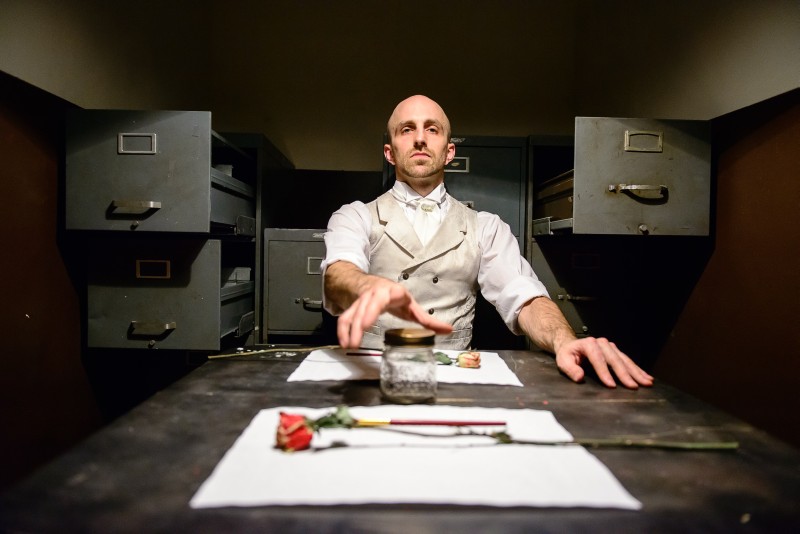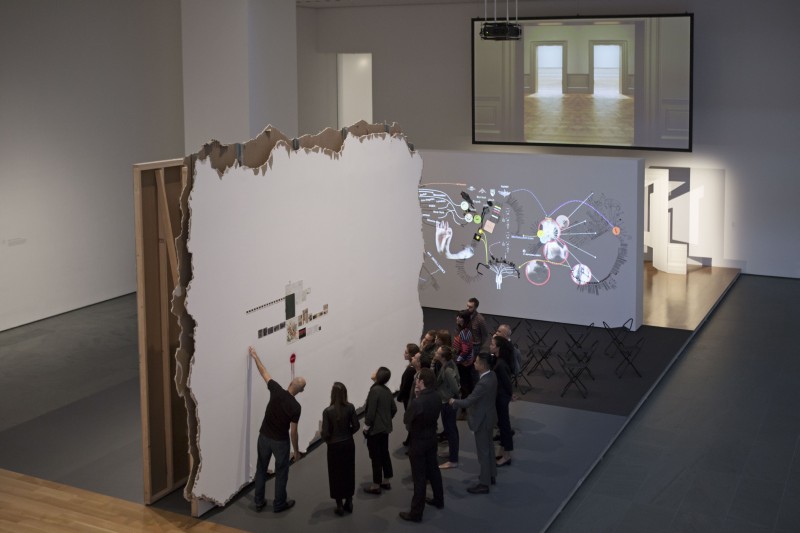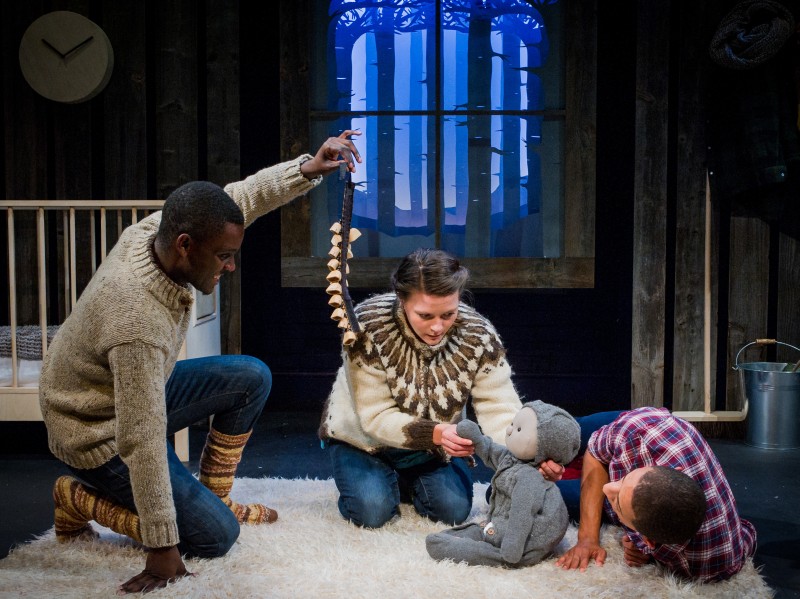 Polka Theatre is a wonderful child-friendly venue that has all the homely charm of a worn and well-loved teddy bear, or a toy box you can walk into. It has two performance spaces: the main space with all you would expect of a theatre space and the Adventure Theatre, which used to be little more than a carpeted room and now is blessed with great technical support in a space no bigger than a large dining room.
Polka Theatre is a wonderful child-friendly venue that has all the homely charm of a worn and well-loved teddy bear, or a toy box you can walk into. It has two performance spaces: the main space with all you would expect of a theatre space and the Adventure Theatre, which used to be little more than a carpeted room and now is blessed with great technical support in a space no bigger than a large dining room.
Beasty Baby takes advantage of this intimacy in a very domestic performance where three people (Sian Kidd, John Leader, and John Pfumojena) come in from the cold to prepare for a baby, imagine the arrival, and then deal with a small but rapidly growing infant. There are so few words in this performance that each time a performer speaks it has significance.
The charm and accessibility of this combination of physical performance, puppetry, and music is a result of director Sue Buckmaster’s great experience in creating this style of work, resulting in a show that perfectly captures the shock, delight, tedium, exasperation, and joy of caring for a small child. With repeating refrains of the various rituals of parenting, and some beautiful live musicianship and singing, Beasty Baby successfully creates an astonishingly beautiful poetry of visual theatre that not only keeps small children fascinated and amused but also celebrates parenting – honouring and touching the parents and carers in the audience.
Having three performers on stage, and giving the puppeteer, Sian Kidd, the primary responsibility of animating and voicing the larger beasty baby puppet (with a delightful babble of half-formed words and an impulsive, determined character) means that the two male performers become a tag-team of surrogate fathers who have to cajole, distract, encourage, and delight this toddler with ever more inventive tactics. It’s sadly common in children’s theatre to see very few fathers and male carers in the audience. Even when they are in attendance, it’s often the case that they aren’t engaging in sharing the experience with their children. John Leader and John Pfumojena provide some wonderfully positive modelling of good parenting, often tired, exasperated and having run out of ideas, only to find a new tactic that works – momentarily.
The show feels quite Scandinavian in Verity Quinn’s clean design, yet there are some wonderful African rhythms and vocal harmonies sung live supporting the music composed by Jessica Dannheisser. The blend of different cultural influences adds an interesting texture to the piece, freeing it of being located in any one culture. Simple but effective set changes give the satisfying appearance of emerging naturally from the play/parenting and the precision of its physical theatre and puppetry is of a very high standard.
Theatre-Rites and Polka Theatre have created a small but perfectly formed gem of a show, full of emotional resonance and surprising depth that perfectly captures the early years experience, from the perspective of both the child and the parent.

